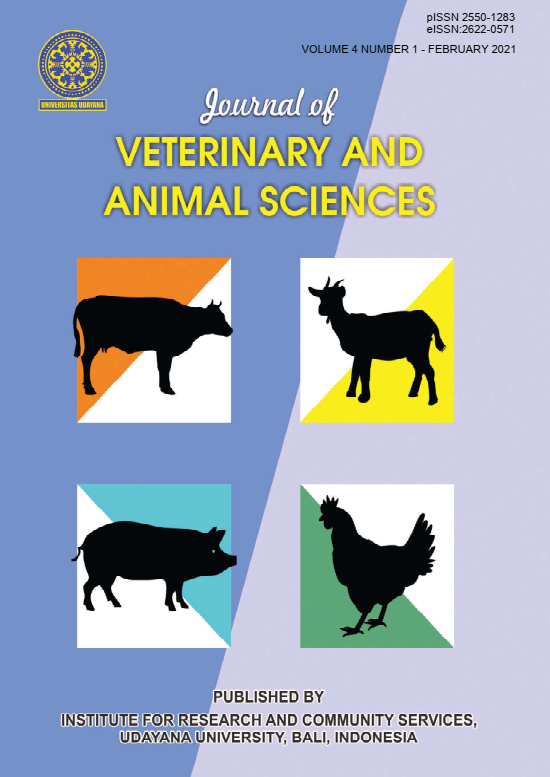The Comparison of The Quality of Balinese and Landrace Porks in Terms of Water Holding Capacity and Cooking Loss
Abstract
Pig is one of the crucial livestock in providing animal protein for a portion of the Indonesian population. Pork is one of the critical commodities concerning nutritional, socio-cultural, and economic aspects. This study aimed to determine the water holding capacity (WHC) of meat, i.e., the ability of meat to maintain water content during processing and cooking loss of meat, i.e., a function of temperature and cooking time. Cooking loss is the lost sample weight during smoking related to WHC and meat juice levels. Sampling was performed at the Mr. Mangku traditional slaughterhouse, Abiansemal Sub-District, Badung Regency, Bali. Samples consisted of 16 Balinese pork and 16 Landrace pork from the Psoas major muscle. The laboratory test results were then analyzed using the Two Independent T-test SPSS. The analysis results showed that the WHC of Balinese pork was relatively higher than that of Landrace pork, although insignificant. Meanwhile, the cooking loss of Balinese pork was significantly lower than that of Landrace pork. It can be concluded that the quality of Balinese pork is better than Landrace pork on water holding capacity and cooking loss.











